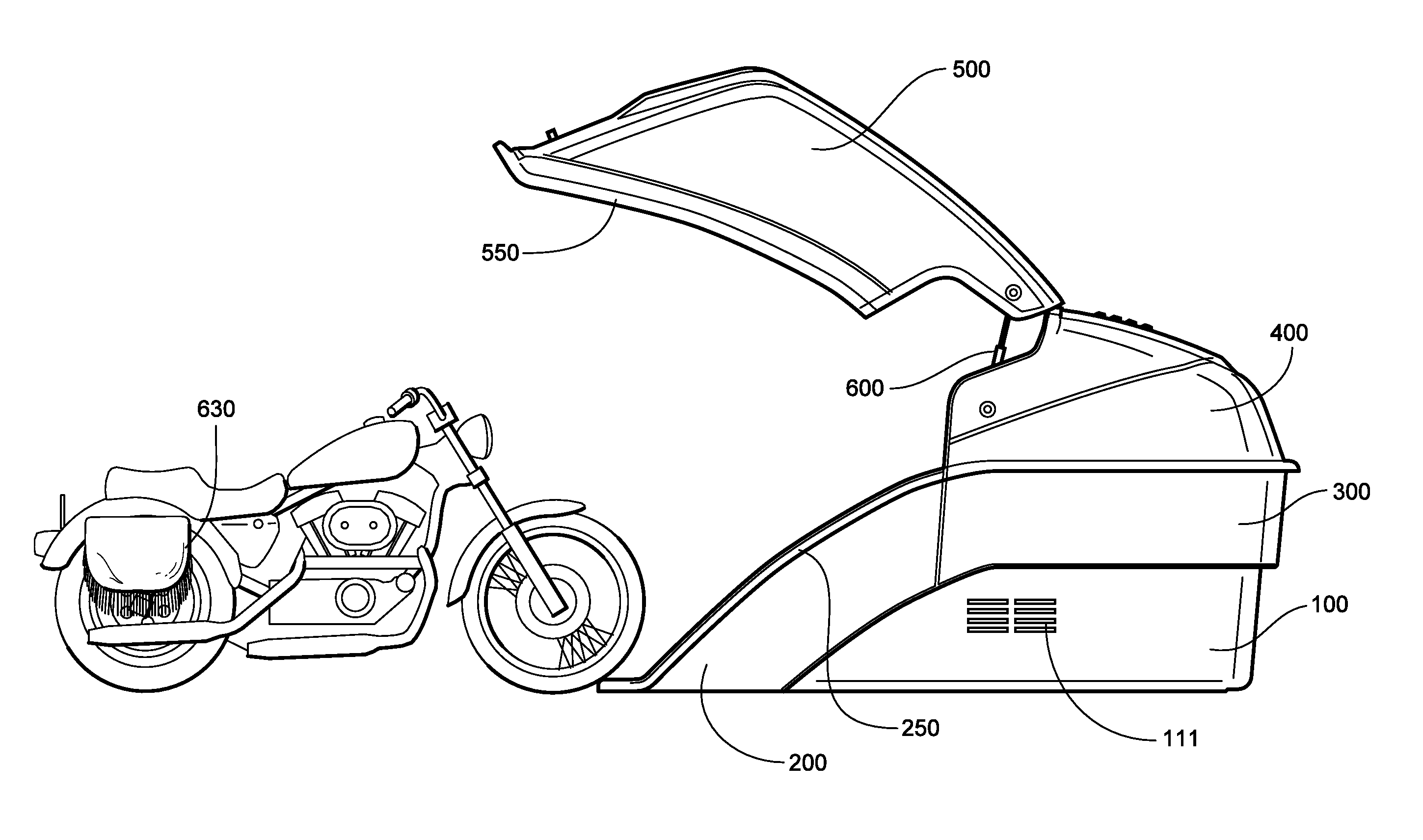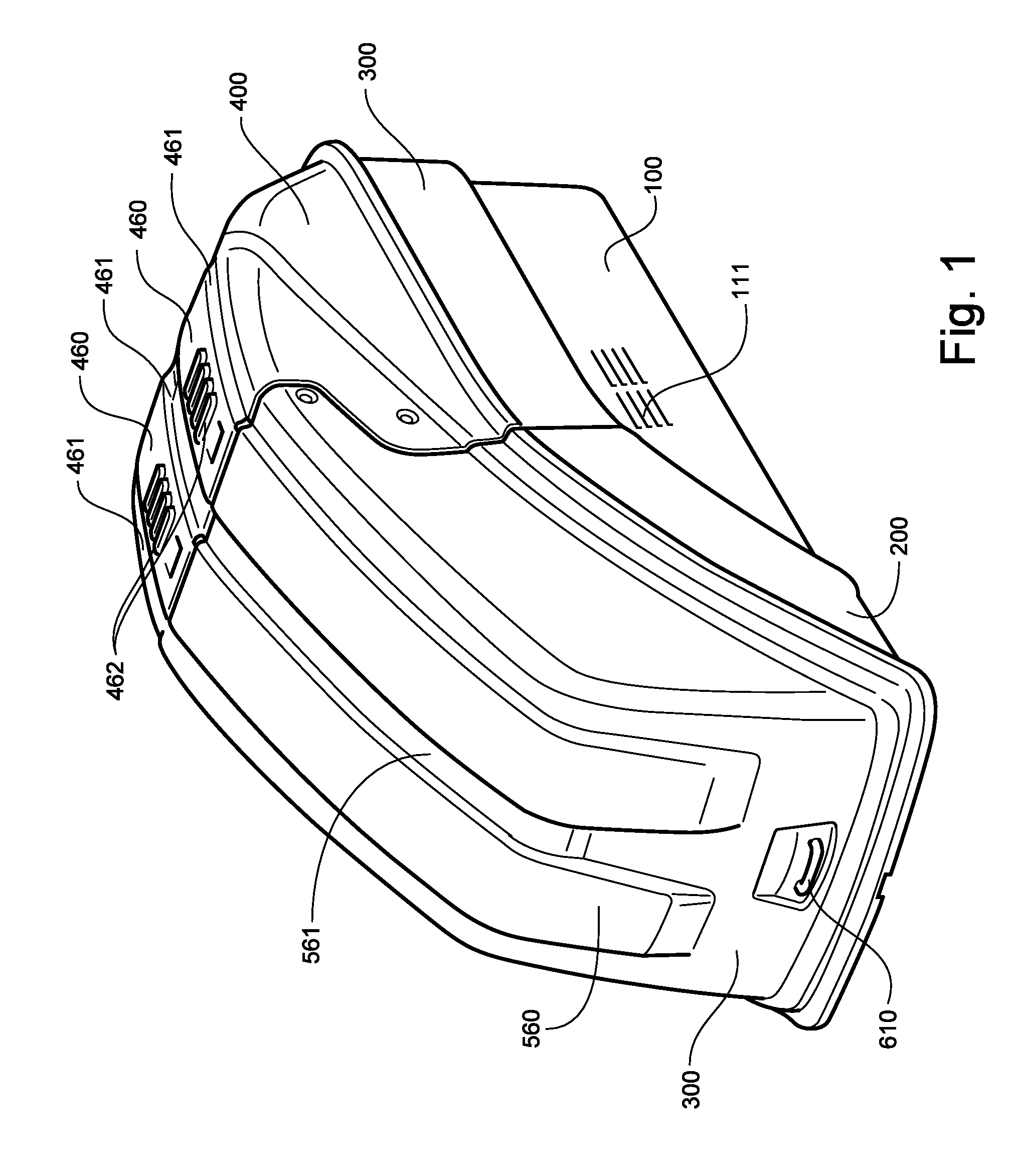Security shelter for small personal transportation vehicles
a personal transportation vehicle and security shelter technology, applied in the field of small personal transportation vehicle security shelters, can solve the problems of less growth in this segment of transportation, less use of personal transportation vehicles, and more theft of passenger cars, so as to eliminate dead space, facilitate user manipulation of lids, and lighten weight
- Summary
- Abstract
- Description
- Claims
- Application Information
AI Technical Summary
Benefits of technology
Problems solved by technology
Method used
Image
Examples
Embodiment Construction
[0027]It is to be understood by a person having ordinary skill in the art that the present discussion is a description of exemplary embodiments only, and is not intended as limiting the broader aspects of the present invention. The following example is provided to further illustrate the invention and is not to be construed to unduly limit the scope of the invention.
[0028]The invention is characterized by its efficiency of production, its lightweight compared to the relevant prior art, its portability, its security, its weather resistance, its safety, and its general user friendliness.
[0029]The basic components include a lid (500), a top (400), a threshold (200), a mid-wall (300), and a base (100). The base (100) constitutes the foundation of the device and further comprises the floor (101), the base walls (110, 120, &130), the side vents (111&121), the anchor points (640), and structural flooring ridges (102).
[0030]The floor of the base (101) is the surface upon which the personal t...
PUM
 Login to view more
Login to view more Abstract
Description
Claims
Application Information
 Login to view more
Login to view more - R&D Engineer
- R&D Manager
- IP Professional
- Industry Leading Data Capabilities
- Powerful AI technology
- Patent DNA Extraction
Browse by: Latest US Patents, China's latest patents, Technical Efficacy Thesaurus, Application Domain, Technology Topic.
© 2024 PatSnap. All rights reserved.Legal|Privacy policy|Modern Slavery Act Transparency Statement|Sitemap



